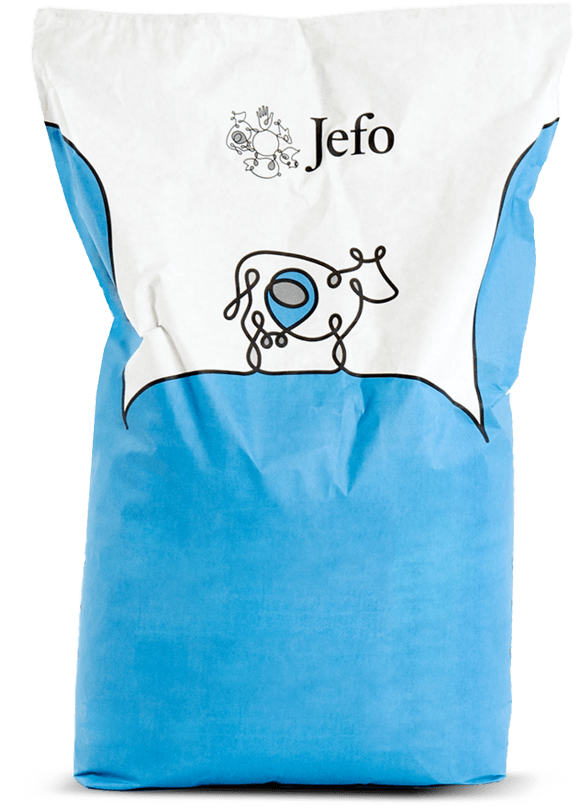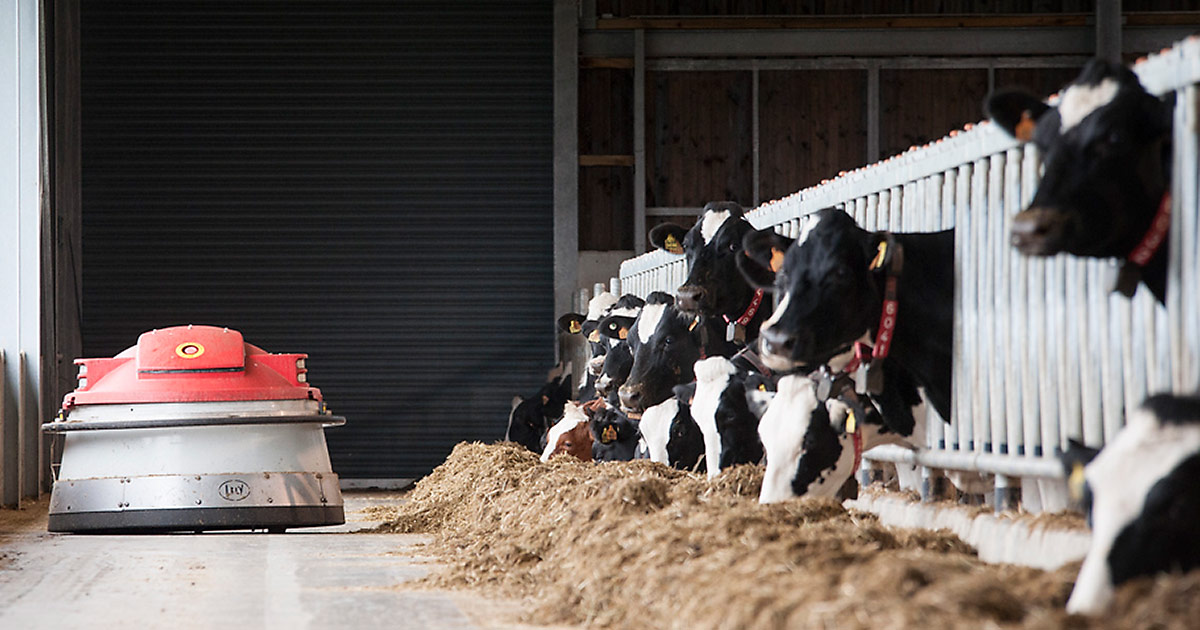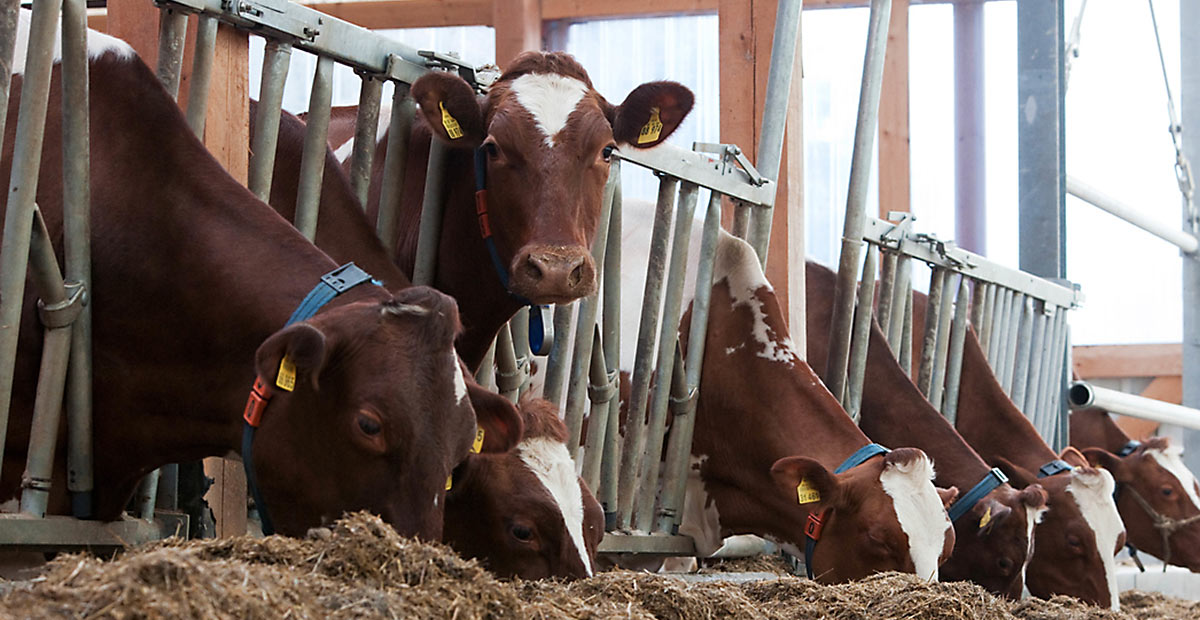One Size Does Not Fit All
What makes Jerseys unique and what are tips for helping them through transition?
This article appeared in Progressive Dairy.
By Kara Ortega, M.S., P.A.S., and Victoria Asselstine, Ph.D.
Kara is the Western USA Territory Manager, Jefo Nutrition Inc., and Victoria is Ruminant Technical Service Consultant, Jefo Nutrition Inc.
What if we could do more with less? That is perhaps one of the many reasons why the Jersey breed continues to gain popularity and now makes up 9% of the U.S. dairy cattle inventory. Their smaller size and combination of performance traits make them an attractive, valuable asset to dairy operations across the country.
It is important to understand how this growing breed of dairy cows stands apart from the crowd of Holsteins, especially throughout the transition period. Knowing how they differ allows farmers to manage them as the unique animals they are. When working with the Jersey breed, our team focuses on three key areas of differentiation:
- Feed intake and digestion
- Energy metabolism
- Health
- Feed intake and digestion
During the transition period, a drop in feed intake prepartum occurs in all breeds, increasing the risks of metabolic diseases. However, we have seen that Jerseys tend to maintain a higher dry matter intake after calving, relative to their body weight. Another difference in their intake compared to Holsteins is that Jersey cows tend to spread their meals over a 24-hour period. This helps prevent metabolic diseases, as it creates a more stable rumen environment. They also spend more time chewing per unit of dry matter, which further aids in maintaining a more stable rumen pH.
The increased chewing reduces particle size of feeds and digesta, which results in gains in fiber digestibility. This makes Jerseys incredibly efficient feed converters compared to other breeds, allowing them to get more energy from diets, even with smaller absolute feed intake. Scientific research supports that for Jerseys and Holsteins to produce the same amount of protein, milk fat and other solids, Jersey cows require 32% less water, use 11% less land and 21% less fossil fuels, and produce less waste. Since they are better able to utilize the energy from their diet, this corresponds to a glass of Jersey milk containing 18% more protein, 29% more milk fat and 20% more calcium than a glass of Holstein milk.
Tips and solutions:
- More frequent feed pushups to avoid empty bunks and to correspond to Jersey cows’ desire to consume their feed over a 24-hour period.
- TMR audits to reduce sorting and variation within diets, as Jerseys are notoriously good at feed sorting.
- Energy metabolism
As previously mentioned, Jerseys are smaller than Holsteins, and therefore there is a potential for feed competition when housed with Holsteins. It has been observed that although smaller, Jerseys are more assertive and well-balanced, and typically this means they are often first to the feed bunk. While thinking about housing arrangements, it is important to consider that Jerseys tend to reach maturity faster than other breeds, and this creates a risk of becoming overweight if overfed. We commonly observe this when Jerseys are housed with Holsteins of the same age, as Holsteins need more energy to meet their genetic potential. If the same high-energy ration is fed to both Jerseys and Holsteins of the same age, we tend to see Jerseys become overweight. To combat this, Jersey Canada suggests housing Jerseys with Holsteins who are three months older, which more closely matches the feed these heifers require at that age and can help reduce any excess weight gain.Also related to weight gain, when body condition scoring (BCS) around the transition period, it is important to consider that Jerseys typically deposit fat on the body differently than Holsteins. They commonly deposit it around the tailhead, so when utilizing the traditional 5-point scoring system, it is important to know how the Jersey deposits her fat, and not let that influence the BCS from pre- to post-partum.
Tips and solutions:
- Ensure proper stocking density (no more than 80%) and cow comfort in close-up pens, both at the feed bunk and stalls, and/or group by BCS, stage of lactation, etc.
- Provide more nutrients that support energy metabolism pathways (Krebs Cycle) including co-enzymes, in the form of rumen-protected B vitamins. For example, a trial conducted in Jersey close-up cows demonstrated that cows fed a protected blend of B vitamins and choline prepartum produced on average 3.5 lb/day more until 120 DIM.
- If you need to mix breeds, consider housing Jerseys with Holsteins that are three months older to counteract their ability to mature faster and prevent unnecessary weight gain.
- Health
There are also differences in Jerseys that positively impact their health. For example, their small stature and hard black hooves make them less prone to hairy heel warts and lameness issues. Another biological difference between Holsteins and Jerseys is that Jerseys have a naturally higher rumen pH. With this, Jerseys experience less inflammatory responses and therefore can handle and recover from acidosis better than Holsteins.On the flip side, Jerseys have fewer vitamin D receptors in the gut, and therefore they are three times more likely to experience milk fever than Holsteins. It’s important to have a close-up program in place to help prevent hypocalcemia, and to understand that a Jersey may need different pre-fresh protocols than Holsteins.Lastly, although Jerseys do not experience as drastic of a negative energy balance as Holsteins, it is still something that producers should focus on to ensure that Jersey cows transition through the calving period and into lactation properly.
Tips and solutions:
- Monitor your cows’ DCAD status by measuring urine pH. The ideal urine pH of close-up Jersey cows should be between 5.8 and 6.2 (compared to 6.2-6.7 in Holsteins). If you cannot achieve these levels with your current close-up ration, a multitude of calcium mobilization strategies exist, including the use of anionic salts.
- Help cows produce more glucose (source of energy) to reduce the impact of the negative energy balance and suppressed immune system. Many nutritional solutions exist, including the supplementation of protected choline, B vitamins and amino acids.
Conclusion
As demonstrated through this article, Jerseys are not small Holsteins! Current understanding of the breed indicates that Jerseys have their own requirements and different nutritional challenges that we must consider when formulating rations. More breed-specific research is necessary to ensure the growing number of Jersey cows in the USA continue to get the unique care they require.
your rep for
a call back




